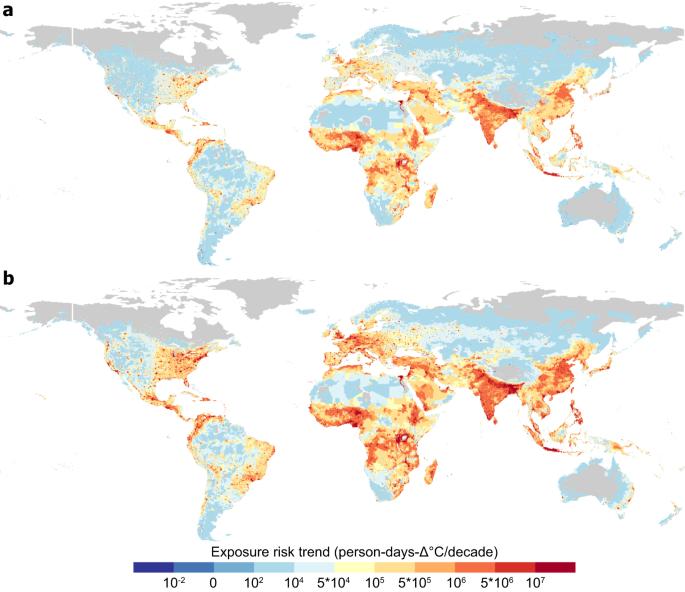Rising vulnerability of compound risk inequality to ageing and extreme heatwave exposure in global cities
IF 8.8
Q1 ENVIRONMENTAL STUDIES
引用次数: 2
Abstract
Continued warming trends lead to an increasing risk of exposure to extreme heatwaves, which threaten the health of urban residents, especially the ageing population. Here, we project the spatiotemporal trend of future exposure risk across 9188 global urban settlements between 2020 and 2100 under the shared socioeconomic pathway (SSP) 2-4.5 and SSP5-8.5 scenarios. Results show that urban heatwave exposure risk increases by 619% and 1740% for SSP2-4.5 and SSP5-8.5, respectively, and by 1642% to 5529% for the elderly. Notably, 69% of the elderly exposure risk comes from middle-income countries, where the increasing trend on the regional average is 1.2 times higher than that of high-income countries. There is an increasing trend towards greater concentration on large cities, especially in low- and lower-middle-income countries. In high-income countries, climate effects contribute 39% to 58% of increasing exposure for elderly individuals, whereas ageing effects play more prominent role in lower-income countries. This emphasizes the disproportionately higher heat-related burden for elderly individuals and inequitable trends in lower income countries. Understanding the vulnerable and priority regions in future heatwave exposure will inform adaptation strategies to support urban climate-resilient development.

全球城市日益容易受到老龄化和极端热浪影响的复合风险不平等
持续变暖的趋势导致暴露于极端热浪的风险不断增加,威胁着城市居民的健康,尤其是老龄人口。在此,我们预测了在共同社会经济路径(SSP)2-4.5 和 SSP5-8.5 情景下,2020 年至 2100 年全球 9188 个城市住区未来暴露风险的时空趋势。结果显示,在 SSP2-4.5 和 SSP5-8.5 情景下,城市热浪暴露风险分别增加了 619% 和 1740%,老年人的热浪暴露风险增加了 1642% 至 5529%。值得注意的是,69%的老年人暴露风险来自中等收入国家,这些国家的区域平均增长趋势是高收入国家的 1.2 倍。特别是在低收入和中低收入国家,越来越多的风险集中在大城市。在高收入国家,气候影响占老年人受影响程度增加的 39%至 58%,而在低收入国家,老龄化影响的作用更为突出。这强调了老年人与高温相关的负担过重,以及低收入国家的不公平趋势。了解未来热浪暴露的易受影响地区和重点地区,将为支持城市气候适应性发展的适应战略提供信息。
本文章由计算机程序翻译,如有差异,请以英文原文为准。
求助全文
约1分钟内获得全文
求助全文

 求助内容:
求助内容: 应助结果提醒方式:
应助结果提醒方式:


